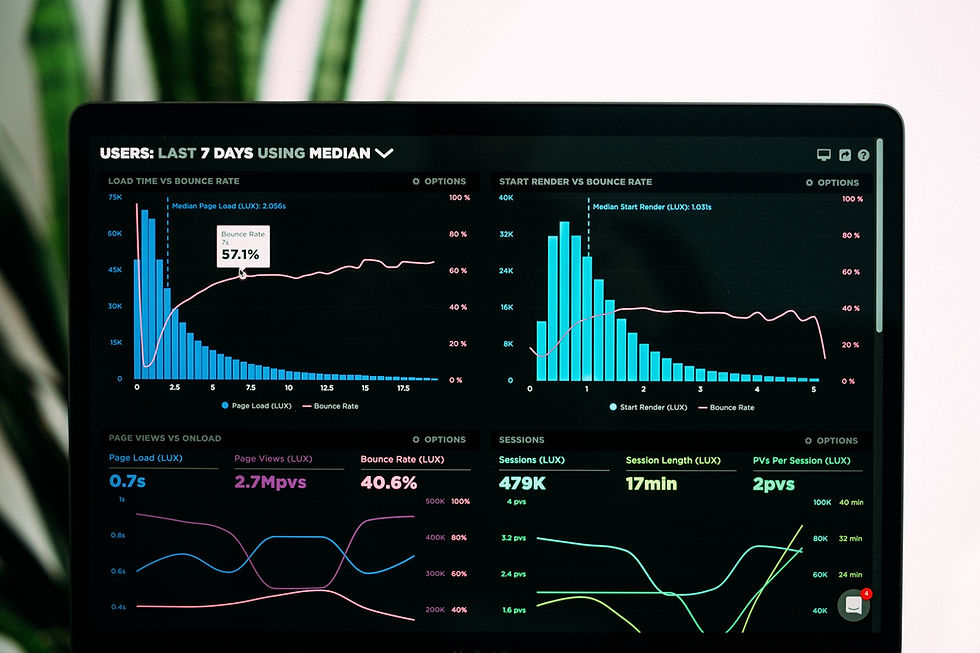SMART KPI Examples & Why They Matter
- Teamworks

- Dec 13, 2022
- 3 min read

KPIs, or Key Performance Indicators, are essential for business success. They help you measure the progress of your company and track whether or not you are achieving your goals. If you want to ensure that your KPIs are effective and useful, then using SMART goals is essential.
SMART stands for Specific, Measurable, Achievable, Relevant, and Time-Bound. Let’s break down what SMART KPIs are and a few SMART KPI examples.
Why Use SMART with KPIs?
The SMART framework helps ensure that your goals are achievable and realistic, which is especially important when setting up KPIs for monitoring performance. Without adhering to the SMART guidelines, you may end up setting unrealistic expectations for your team members or not aligning your goals with the overall mission of the organization.
By using the SMART framework in conjunction with KPIs, you can ensure that everyone understands what needs to be accomplished and when it needs to be completed in order to reach success.
Specific
When setting a KPI goal, you should make sure that it is specific and clearly defined. By being specific about what you want to achieve with this goal, you can better plan out how to reach it. For example, if your company wants to increase sales by 5%, then set a specific goal of reaching this number within a certain period of time.
Measurable
It's important that you are able to measure the progress of your KPI in order to determine whether or not it has been successful. For example, if your goal is to increase website traffic by 10%, then measure the amount of website visitors each day or week until the goal is reached.
Achievable
Your KPI should be achievable but also challenging enough that it pushes you and your team further than before. Setting an ambitious goal is good but make sure that it’s attainable in order for it not to become too overwhelming or unrealistic.
Relevant
Make sure that the KPI relates closely to the overall mission of your company and that it adds value and boosts productivity in some way. For example, if one of your goals is to increase customer satisfaction levels by 10%, then focus on activities such as providing better customer service or increasing product quality in order to meet this objective.
Time-Bound
Lastly, make sure that all KPI goals have a deadline attached so that they can be tracked over time more easily. This allows everyone involved in achieving these objectives to stay focused on their tasks and ensures that there’s motivation behind each milestone achieved along the way!
Examples of KPI Using The Smart Framework
There are many different types of KPIs you can use depending on your industry or specific business objectives. But when it comes to setting SMART KPIs, these might look a little different. Let’s showcase a few easy examples of SMART KPIs.
Increase website traffic by 25% within 6 months - Specific (website traffic), Measurable (25%), Achievable (within 6 months), Relevant (increase website traffic), Time-bound (6 months)
Reduce customer acquisition costs by 30% within 12 months - Specific (customer acquisition costs), Measurable (30%), Achievable (within 12 months), Relevant (reduce customer acquisition costs), Time-bound (12 months)
Increase sales revenue by 20% in 3 quarters - Specific (sales revenue), Measurable (20%), Achievable (in 3 quarters), Relevant (increase sales revenue), Time-bound (3 quarters)
By utilizing the power of KPI combined with the clarity and focus provided by the SMART goal-setting framework, businesses have all the tools they need at their disposal to create meaningful objectives and track progress towards those objectives in real time. With this combination, businesses can easily assess their current performance level, identify areas for improvement, set realistic expectations for employees, and ultimately achieve more meaningful results.




Comments